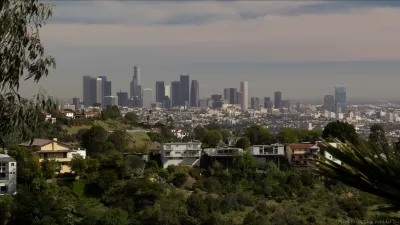Sacramento Bee's political columnist, Dan Walters, writes that NIMBYs are among the main reasons for the state's chronic housing crisis, and one of their main tools is the California Environmental Quality Act, which must be reformed by politicians.

California's recent rains might help alleviate the state's water crisis, but the state's other chronic crisis, lack of housing, particularly the affordable type, remains untouched.
According to Zumper’s national rent survey in December, "four of the nation’s 10 highest rental markets in California, topped by San Francisco’s average of $3,500 for a one-bed apartment," writes Walters. [Ed.'s note: Zumper has been questioned as a reliable information source regarding the rental market.]
High housing costs are driving the state's high migration rate—more residents leave for other states than move here, as well as being "the major factor in the state having the nation’s highest level of functional poverty, according to the Census Bureau and the Public Policy Institute of California."
The market is evidently there, and private developers, it would seem, are ready to fill it, at least for those in the moderate-to-high income brackets. The impediments are largely political.
NIMBYism – not-in-my-backyard – is rampant in California, sometimes erupting extemporaneously in response to development proposals, sometimes driven by misguided environmentalism. It affects even high-density “infill” projects that environmentalists support in principle, but often oppose in practice.
An example is the Neighborhood Integrity Initiative in Los Angeles that, if enacted, would make it almost impossible to build large-scale housing projects in a huge city already experiencing mass homelessness and immensely burdensome housing costs, as Mayor Eric Garcetti points out in his criticism of the measure.
Walters points out to the use of CEQA by infill opponents as being a major reason for the failure of the metropolitan regions to build sufficient housing, thus driving up cost. "Were politicians willing to seriously address California’s housing crisis, rather than make token gestures, they’d reform CEQA and take other steps to encourage supply," he writes.
A recent CEQA study posted here confirms his perspective, but is careful to separate NIMBYs from environmentalists.
- And in the private sector, higher-density housing is most contested. Infill projects in general appear to attract challenges far more often than “greenfield” development, or sprawl.
- “CEQA litigation is not a battle between ‘business’ and ‘enviros’ … [It] is primarily the domain of Not In My Backyard (NIMBY) opponents and special interests such as competitors and labor unions seeking non-environmental outcomes,” writes co-author Jennifer Hernandez.
An earlier study came to an opposite conclusion, finding that "the state's environmental law is low on the list of barriers to infill development," according to a 2012 post.
Hat tip: Len Conly, Sierra Club Bay Area Transportation Forum.
FULL STORY: Dan Walters: State’s big housing dilemma

Planetizen Federal Action Tracker
A weekly monitor of how Trump’s orders and actions are impacting planners and planning in America.

Congressman Proposes Bill to Rename DC Metro “Trump Train”
The Make Autorail Great Again Act would withhold federal funding to the system until the Washington Metropolitan Area Transit Authority (WMATA), rebrands as the Washington Metropolitan Authority for Greater Access (WMAGA).

DARTSpace Platform Streamlines Dallas TOD Application Process
The Dallas transit agency hopes a shorter permitting timeline will boost transit-oriented development around rail stations.

Renters Now Outnumber Homeowners in Over 200 US Suburbs
High housing costs in city centers and the new-found flexibility offered by remote work are pushing more renters to suburban areas.

The Tiny, Adorable $7,000 Car Turning Japan Onto EVs
The single seat Mibot charges from a regular plug as quickly as an iPad, and is about half the price of an average EV.

Supreme Court Ruling in Pipeline Case Guts Federal Environmental Law
The decision limits the scope of a federal law that mandates extensive environmental impact reviews of energy, infrastructure, and transportation projects.
Urban Design for Planners 1: Software Tools
This six-course series explores essential urban design concepts using open source software and equips planners with the tools they need to participate fully in the urban design process.
Planning for Universal Design
Learn the tools for implementing Universal Design in planning regulations.
Municipality of Princeton
Roanoke Valley-Alleghany Regional Commission
City of Mt Shasta
City of Camden Redevelopment Agency
City of Astoria
Transportation Research & Education Center (TREC) at Portland State University
US High Speed Rail Association
City of Camden Redevelopment Agency
Municipality of Princeton (NJ)




























